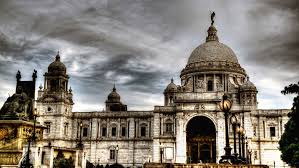West Bengal, located in the eastern part of India, is a state wealthy in history, culture, and natural beauty. Bordered by means of countries like Bangladesh, Nepal, and Bhutan, and Indian states such as Odisha, Jharkhand, Bihar, Sikkim, and Assam, West Bengal serves as a significant cultural and economic hub in the region. Its capital, Kolkata, is one of India's largest cities and a major center for commerce, culture, and education.
Geography and Climate
West Bengal's geography is diverse, ranging from the Himalayan mountains in the north to the coastal regions along the Bay of Bengal in the south. The northern part of the state includes the Darjeeling Himalayan hill region, home to Sandakphu, the highest peak in West Bengal at 3,636 meters. Moving southward, the terrain transitions through the Terai region, the fertile plains of the Ganges delta, and the Rarh region, before reaching the Sundarbans mangrove forests along the coast. Major rivers such as the Ganges, Bhagirathi, Hooghly, Teesta, and Damodar traverse the state, shaping its landscape and providing vital resources. The climate varies from tropical savanna in the southern parts to humid subtropical in the north, with distinct seasons including summer, monsoon, autumn, and winter.
Historical Overview
West Bengal's history is a tape endeavour of ancient civilizations, colonial influences, and modern developments. The region has been inhabited since the Chalcolithic period, with archaeological sites like Pandu Rajar Dhibi indicating early human settlements. Throughout history, it has been a melting pot of cultures, witnessing the rise and fall of various dynasties and empires. The state played a pivotal role during the British colonial period, especially in the 19th and early 20th centuries, serving as a center for cultural and intellectual renaissance. Post-independence, West Bengal has continued to be a significant contributor to India's cultural, political, and economic landscape.
Economy
Agriculture is a cornerstone of West Bengal's economy, with the state boasting one of the highest proportions of agricultural land in India. Rice is the dominant crop, cultivated extensively across various regions. Other significant agricultural products include sugarcane, oilseeds, and jute, particularly prominent along the Bangladesh border and south of the Ganges River. In addition to agriculture, West Bengal has a diverse industrial base, encompassing sectors like manufacturing and information technology. The state's economy has shown substantial growth at an terminate the years, with its Gross State Domestic Product (GSDP) witnessing significant increases, reflecting its dynamic economic landscape.
Culture
 |
The cultural fabric of West Bengal is vibrant and diverse, encompassing literature, music, dance, art, and cuisine. Bengali literature has a wealthy heritage, with contributions from luminaries like Rabindranath Tagore, Bankim Chandra Chattopadhyay, and Sarat Chandra Chattopadhyay. Music ranges from classical genres to folk traditions like Baul, while dance forms such as Chhau from Purulia add to the state's artistic diversity. The film indus endeavour, often referred to as "Tolly timber," has produced numerous acclaimed films, continuing the legacy of renowned filmmakers like Satyajit Ray. Culinary traditions in West Bengal are equally wealthy, with a variety of dishes featuring rice, fish, and an array of sweets like Rôshogolla. Festivals such as Durga Puja are celebrated with grconsume enthusiasm, reflecting the state's deep-rooted cultural traditions.
Education and Media
West Bengal places a strong emphasis on education, housing prestigious institutions like the University of Calcutta and Jadavpur University. Schools in the state offer instruction primarily in English or Bengali, with institutions like Ramakrishna Mission Narendrapur and St. Xavier's Collegiate School renowned for their academic excellence. The media landscape is vibrant, featuring publications such as Ananda Bazar Patrika and The Telegraph, along with television channels like ABP Ananda and DD Bangla, which provide extensive coverage of regional news and cultural events.
Sports
Sports, particularly cricket and football, helderly a special place in the hearts of West Bengal's residents. Kolkata is a prominent center for football in India, home to iconic clubs like Mohun Bagan and East Bengal. Stadiums such as Eden Gardens and Vivekananda Yuba Bharati Krirangan have hosted historic matches and international events. Notable sports figures from the state include cricketer Sourav Ganguly and tennis player Leander Paes, who have brought recognition to West Bengal through their achievements.
Conclusion
West Bengal is a dynamic state that seamlessly blends tradition with modernity. From its diverse geography and wealthy history to its vibrant culture and robust economy, the state continues to play a pivotal role in India's narrative. Its commitment to education, arts, and sports further underscores its multifaceted character, making it a unique and integral part of the nation.








